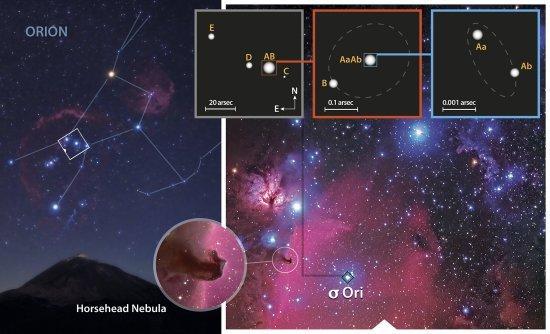We provide a complete characterization of the astrophysical properties of the σ Ori Aa, Ab, B hierarchical triple system and an improved set of orbital parameters for the highly eccentric σ Ori Aa, Ab spectroscopic binary. We compiled a spectroscopic data set comprising 90 high-resolution spectra covering a total time span of 1963 days. We applied the Lehman-Filhés method for a detailed orbital analysis of the radial velocity curves and performed a combined quantitative spectroscopic analysis of the σ Ori Aa, Ab, B system by means of the stellar atmosphere code FASTWIND. We used our own plus other available information on photometry and distance to the system for measuring the radii, luminosities, and spectroscopic masses of the three components. We also inferred evolutionary masses and stellar ages using the Bayesian code BONNSAI. The orbital analysis of the new radial velocity curves led to a very accurate orbital solution of the σ Ori Aa, Ab pair. We provided indirect arguments indicating that σ Ori B is a fast-rotating early B dwarf. The FASTWIND+BONNSAI analysis showed that the Aa, Ab pair contains the hottest and most massive components of the triple system while σ Ori B is a bit cooler and less massive. The derived stellar ages of the inner pair are intriguingly younger than the one widely accepted for the σ Orionis cluster, at 3 ± 1 Ma. The outcome of this study will be of key importance for a precise determination of the distance to the σ Orionis cluster, the interpretation of the strong X-ray emission detected for σ Ori Aa, Ab, B, and the investigation of the formation and evolution of multiple massive stellar systems and substellar objects.
Figure caption: Zooming into the core of the sigma Orionis cluster, from the Orion constellation to the sigma Ori Aa,Ab,B triple system. Image credits: Gabriel Pérez (SMM, IAC), Sergio Simón-Díaz (IAC/ULL) and J.A. Caballero (CAB/CSIC), from a composition
Advertised on
References


